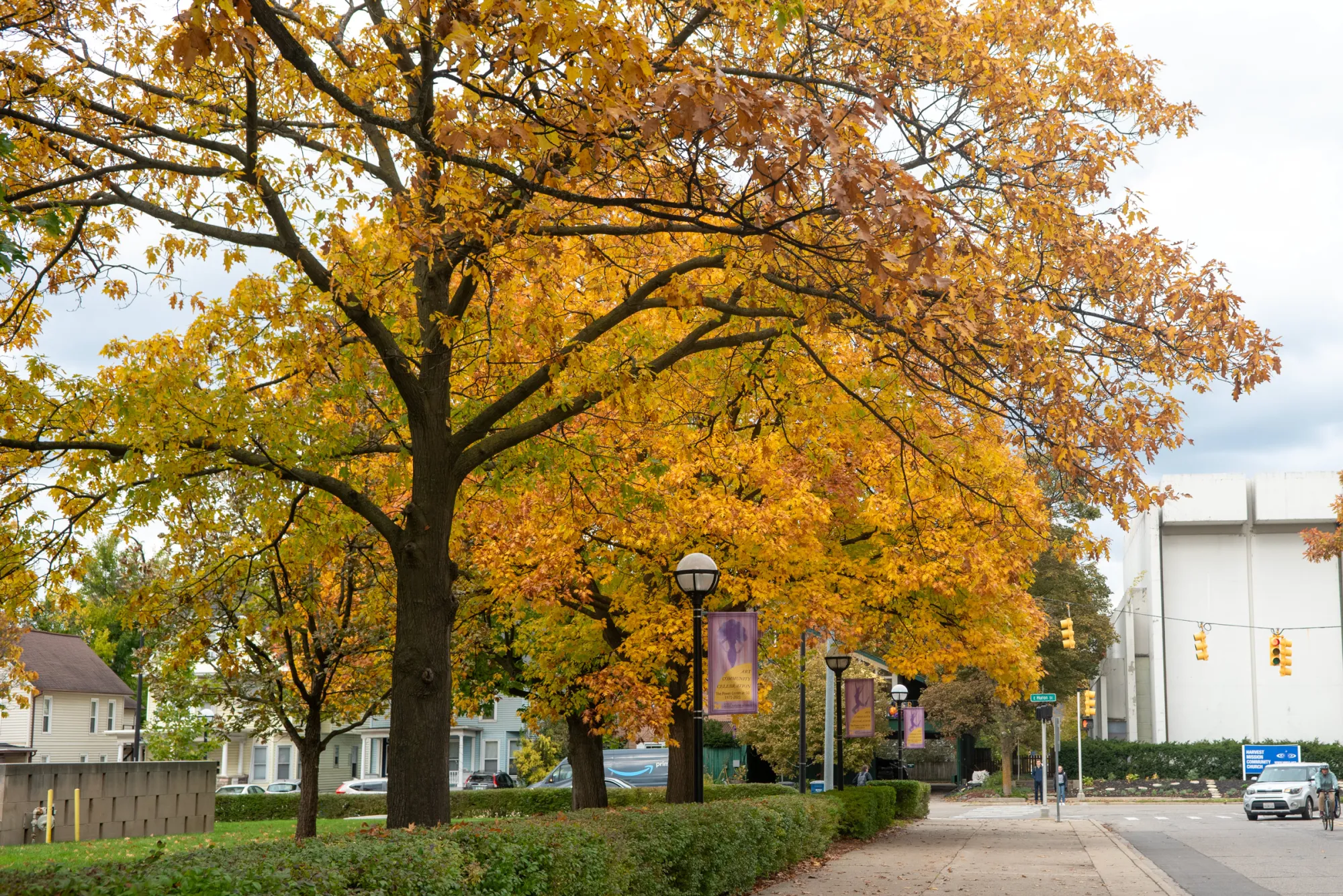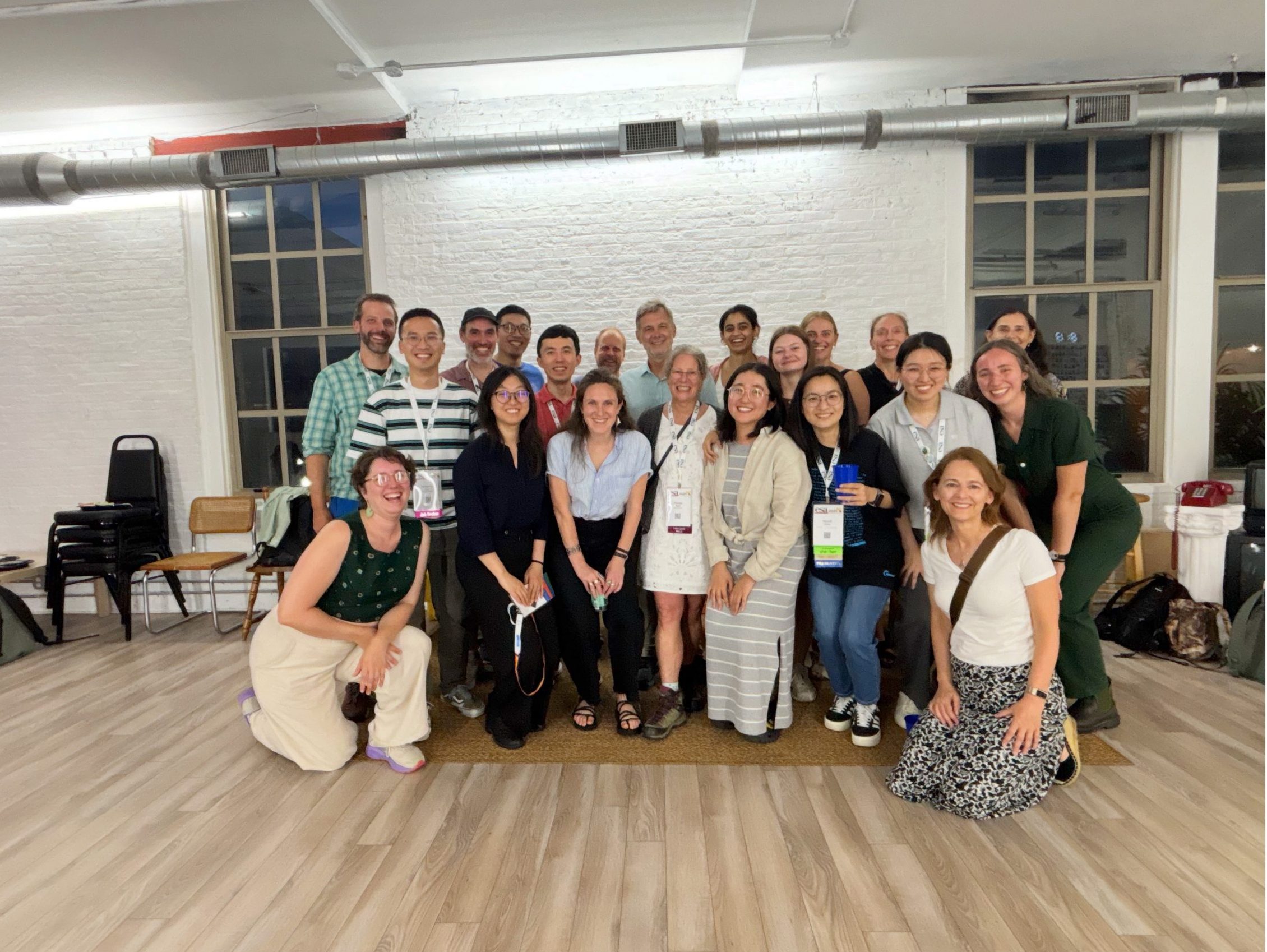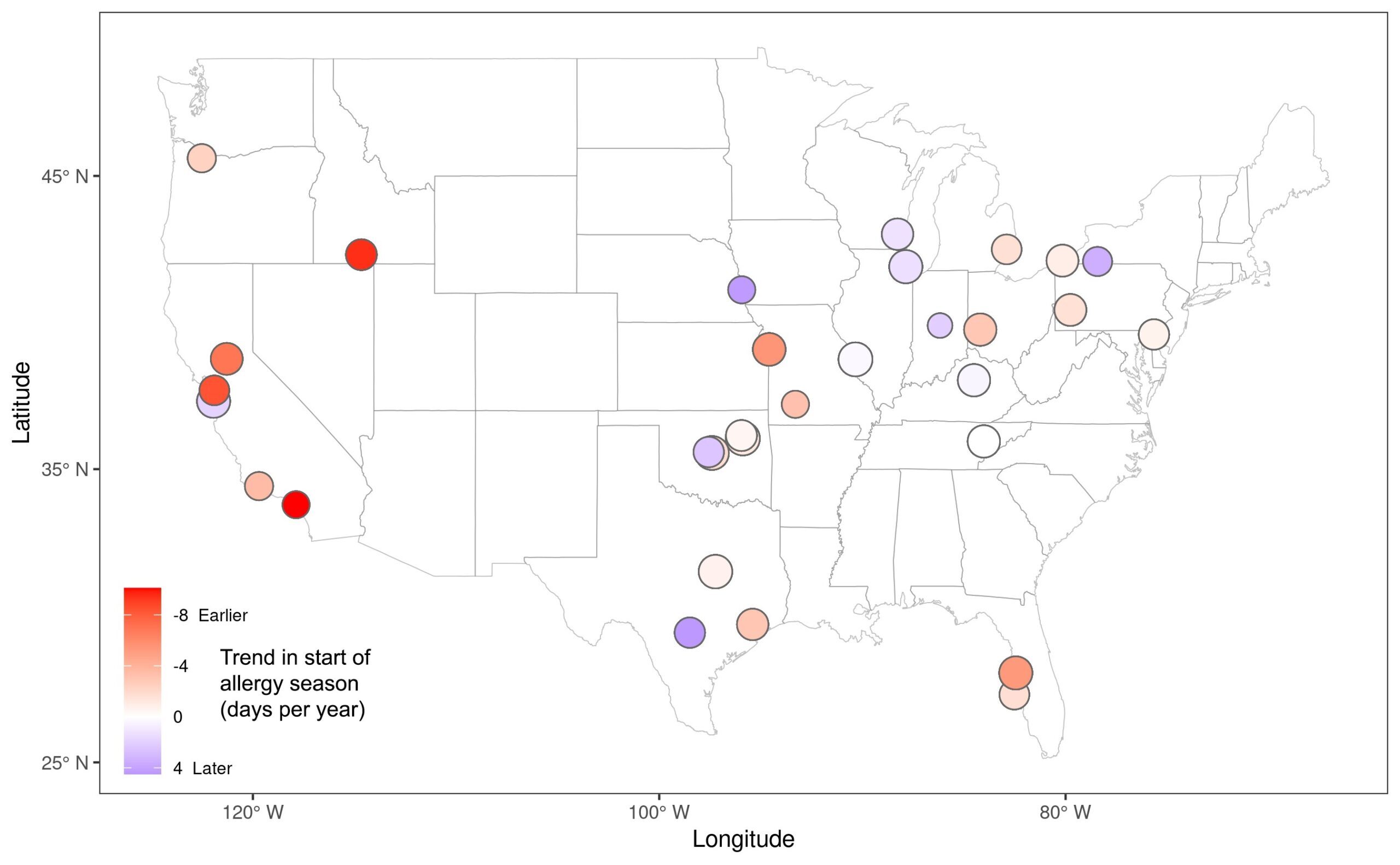From The Michigan Daily
By Hannah Bodnar
While a number of trees in Ann Arbor are exhibiting their vivid reds, oranges and yellows this autumn, some have only just now begun to undergo this transformation. Compared to Michigan’s typical mid-September and October peak period for fall foliage that helps make it a tourism hot spot, this late start is a symptom of climate change that may extend into future fall seasons due to global warming.
Delayed peak colors are not the only indication of climate change’s effect on Michigan’s fall foliage. Across the state, Michigan has seen muted fall colors compared to recent years. A nationwide drought this year has also impacted foliage in the Northeast and Western U.S. Instead of developing their signature rich orange and red hues, many leaves have transitioned straight from green to brown.
In an interview with The Michigan Daily, Inés Ibáñez, professor of environment and sustainability, said shorter days and cooler temperatures in the fall signal trees to produce less chlorophyll, resulting in different colors.
“If all the broadleaf species keep their leaves, they will freeze,” Ibáñez said. “There’s no way to keep them safe from freezing. So that’s the reason why they are going to be dropping the leaves. And that’s a physiological process that is driven both by the length of the day, so that’s one of the cues, and a little bit of also temperatures.”
“The weather conditions before and during the fall strongly enforce how bright and long-lasting the colors are,” Zhu said. “The warmer fall temperature delays leaf color change and makes the fall season later and shorter.”
Zhu said climate change, particularly extreme weather events, accounts for significant long-term changes in both moisture and temperature. These changes can impact fall leaf coloration.
“Let’s say we have heat waves in the summer or even in the fall,” Zhu said. “And an early frost, that’s another extreme event that will both reduce the color and quality. Climate change increases the odds of all these extreme events. In the long run, in some areas the timing of peak color has shifted. Research has found that this timing has shifted by one or two weeks over recent decades. That’s quite a lot of change in terms of timing.”
Inés Ibáñez said climate change not only affects fall foliage, but also has large consequences on trees in the springtime, citing 2012 as an example of one of Michigan’s warmest years that devastated the state’s apple crop.
“When we think about phenology, it is not only the change of colors, it’s also things coming out in the spring and reproducing,” Ibáñez said. “All that in 2012 was very unusually warm here in Michigan, so all the fruit trees started flowering super early and then there was a late frost. It killed the whole apple crop. That’s one of the major economic consequences.”
Zhu said one potential negative impact of poor fall foliage includes a weakened tourism industry.
“A lot of people go out to see the fall colors,” Zhu said. “This will have an impact on the natural ecosystems in the way that our nature displays the brilliant colors and as we see them. Tourism is a big part of that.”
Further, Zhu said the stressors that cause these delayed changes in leaf color ultimately impact the overall health of the forest, leading to lower carbon dioxide uptake by trees.
“The other thing is that when trees grow, they are providing a lot of service in taking up the carbon dioxide in the atmosphere and turning this into oxygen,” Zhu said. “If we have less vibrant ecosystems, that also affects the kinds of services that they provide to us.”
LSA freshman Joseph Stout, who is from Michigan, said he believes this dull fall foliage serves as a reminder of the fragility of the environment and the importance of caring for it.
“The environment is beautiful and really cool to look at and we should work to preserve that,” Stout said. “Creation is beautiful, especially in the fall. That’s something I want to continue to have in Ann Arbor but in general when I go on hikes and in the Arb.”
Daily News Contributor Hannah Bodnar can be reached at bodnar@umich.edu.








